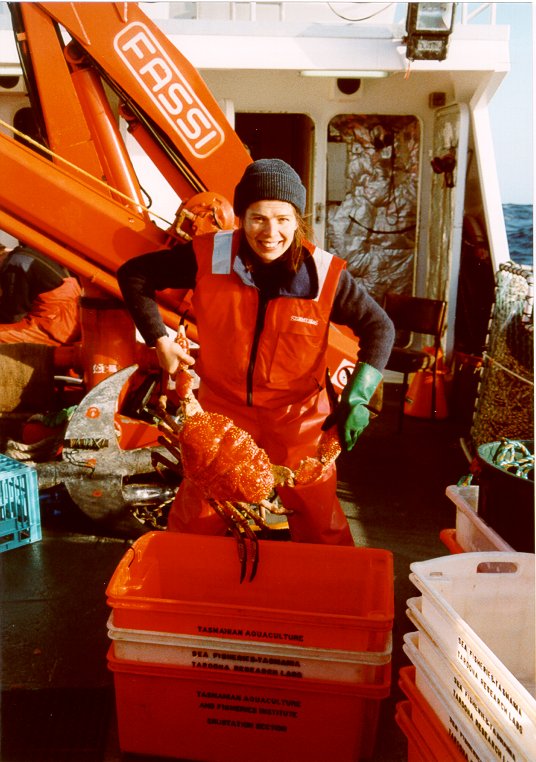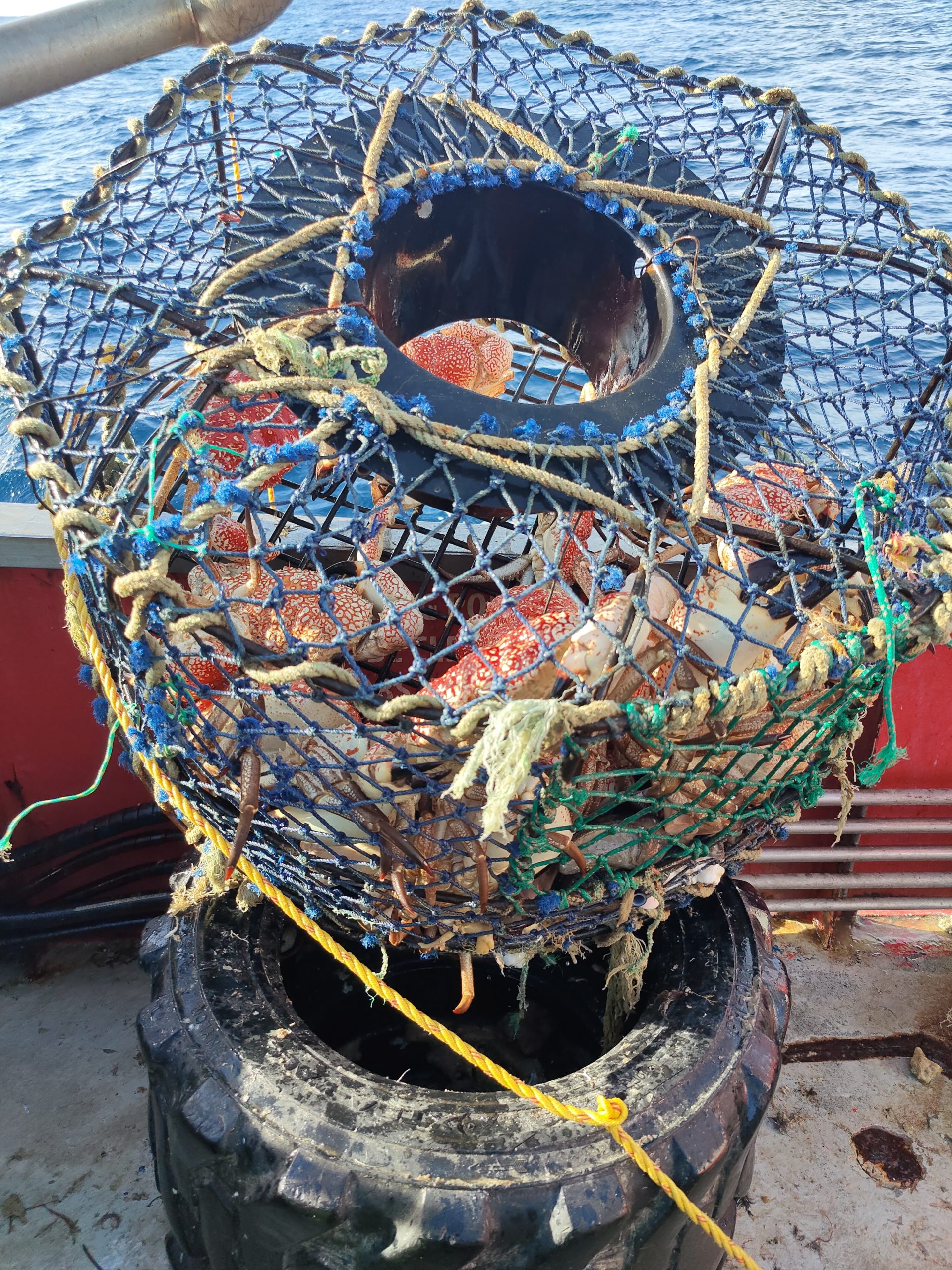Background

Early Commercial Fishery
The commercial fishery for giant crab began in Tasmania in the mid 1990s after a live export market to Melbourne, Sydney and Asia was established (Gardner, 1998). Giant crabs had previously been landed as by-product of rock lobster fishers operating in deeper waters but were generally regarded more as a nuisance than a target. Once giant crab became a targeted species, catches increased dramatically. By 1994/95, total reported catch in Tasmanian waters peaked at 291 tonnes. While some of this catch may be attributable to over-reporting of catch in anticipation of a change in management (moving to quota), it is certain that large quantities of crabs were taken as the virgin stock was being fished down.
Individual Transferable Quotas (ITQs)
By the end of the 1997/98, the total catch had fallen to just 110 tonnes and some concerns were expressed about the downward trajectory of catch rates. At this time quota management was introduced to the associated rock lobster fishery. There was concern that this would displace effort from the rock lobster fishery to the giant grab fishery. In response a giant crab management plan introduced an Individual Transferable Quota (ITQ) system and an initial TAC of 103.5 tonnes in November 1999. The quota year mirrored that for rock lobsters running from 1 March to the end of the following February (NR&E, 1999). Along with the introduction of a TAC, a maximum size limit was set at 215 mm carapace length for both males and females, while the minimum legal length of 150 mm for both sexes, introduced in 1993, was retained.

Maximum Economic Yield (MEY)
In response to ongoing declines in catch per unit effort (CPUE) across much of the fishery and poor performance against indicators (Gardner et al., 2004), the TAC was reduced to 62.1 tonnes for the 2004/05 quota season before being reduced again to 51.75 tonnes in 2009/10 and finally to 46.6 tonnes in 2013/14 (Emery et al., 2015). On the basis of a bioeconomic analysis (Gardner et al., 2009) both the TAC and the minimum legal size limit for males (to 140mm) were reduced for the 2009/10 season and the maximum size limit for males removed for the 2013/14 season.
Giant Crab Trap and Benthic Trawl Fishery Interactions
Giant crab (GC) and bottom trawl (BT) fisheries have overlapping fisheries grounds in some areas around Tasmania. This has led to conflict around several distinct issues which were:
- direct gear interactions (e.g. loss of crab traps);
- fishing mortality of giant crabs as by-product of the trawl fishery;
- mortality/damage to crabs that come in contact with trawl gear; and
- indirect impact on crab productivity through changes to habitat.
The Tasmanian giant crab fishers and the Tasmanian Government had rated trawl interactions as their highest priority research need for several years through the annual Tasmanian marine resource research advisory group process. Resolving this conflict requires information and analysis because the issues are complex. Researchers at IMAS have begun collecting information to balance the needs of multiple resource users when conducting operations on overlapping fishing grounds. You can read the full report on the spatial overlap by Leon et al. (2017) at the link:



